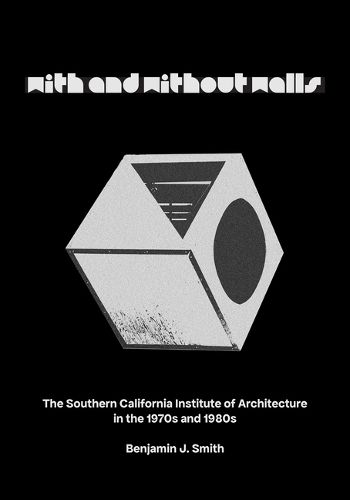Readings Newsletter
Become a Readings Member to make your shopping experience even easier.
Sign in or sign up for free!
You’re not far away from qualifying for FREE standard shipping within Australia
You’ve qualified for FREE standard shipping within Australia
The cart is loading…






The institutional history, With and Without Walls, reveals the origins and progress of the influential Southern California Institute of Architecture (SCI-Arc) through the 1970s and 1980s. After separating from the California State Polytechnic University, Pomona in 1972 amidst feelings of bureaucratic and ideological oppression, Ray Kappe, a Los Angeles-based architect and professor, proposed the formation of SCI-Arc and was the school's first director. Focusing on its early years under Kappe's leadership and the context of the social, cultural, and ecological idealism of the 1960s, the culture of the emerging school became an alternative model for training architects. Building off of the school's founding premise, that in providing freedom through self-study it would be possible to produce both architects and architecture, the book shows how SCI-Arc utilised the "college without walls" concept, a variation on a pedagogical approach popular in the 1970s. SCI-Arc's institutional culture adjusted over time, and it increasingly relied on the versatility of the institutional framework to forge its pedagogy. The principles engendered by the college without walls concept created challenges over the operation of the school and provided opportunities for the creative resolution of those challenges by empowering experimentation. In this way, SCI-Arc was, in itself, both a design problem and a solution in the field of architectural education.
$9.00 standard shipping within Australia
FREE standard shipping within Australia for orders over $100.00
Express & International shipping calculated at checkout
Stock availability can be subject to change without notice. We recommend calling the shop or contacting our online team to check availability of low stock items. Please see our Shopping Online page for more details.
The institutional history, With and Without Walls, reveals the origins and progress of the influential Southern California Institute of Architecture (SCI-Arc) through the 1970s and 1980s. After separating from the California State Polytechnic University, Pomona in 1972 amidst feelings of bureaucratic and ideological oppression, Ray Kappe, a Los Angeles-based architect and professor, proposed the formation of SCI-Arc and was the school's first director. Focusing on its early years under Kappe's leadership and the context of the social, cultural, and ecological idealism of the 1960s, the culture of the emerging school became an alternative model for training architects. Building off of the school's founding premise, that in providing freedom through self-study it would be possible to produce both architects and architecture, the book shows how SCI-Arc utilised the "college without walls" concept, a variation on a pedagogical approach popular in the 1970s. SCI-Arc's institutional culture adjusted over time, and it increasingly relied on the versatility of the institutional framework to forge its pedagogy. The principles engendered by the college without walls concept created challenges over the operation of the school and provided opportunities for the creative resolution of those challenges by empowering experimentation. In this way, SCI-Arc was, in itself, both a design problem and a solution in the field of architectural education.